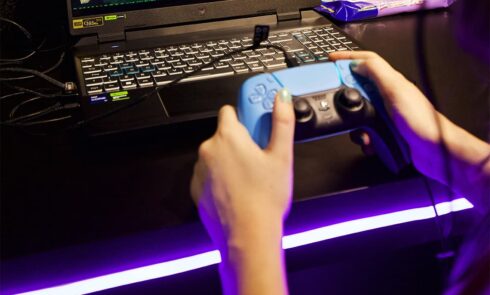The world of racing games is evolving rapidly, driven by advancements in technology that promise to transform the way we experience virtual racing. From immersive virtual reality (VR) to sophisticated artificial intelligence (AI), the future of racing games is set to offer unprecedented levels of realism, interactivity, and excitement. In this article, we’ll explore how these cutting-edge technologies are shaping the future of racing games and what players can look forward to. And if you enjoy games like mathplayground drift boss, you’ll find these developments particularly exciting.
1. Virtual Reality (VR): Immersive Racing Experiences
Virtual Reality is one of the most transformative technologies for racing games, offering players a level of immersion that traditional screens cannot match.
- Enhanced Immersion: With VR headsets, players are transported into the cockpit of their virtual car, experiencing the game from a first-person perspective. This creates a sense of presence that makes racing feel more real and engaging.
- Realistic Environments: VR allows for highly detailed and immersive environments, where players can look around and see their surroundings in 360 degrees. This enhances the realism of tracks and car interiors, providing a more authentic racing experience.
- Improved Feedback: Many VR setups include motion controls and haptic feedback, further enhancing the sense of driving. Players can feel the vibrations of the road and the impact of collisions, adding to the overall immersion.
2. Artificial Intelligence (AI): Smarter Opponents and Adaptive Challenges
AI technology is revolutionizing how opponents and game environments behave, making racing games more dynamic and challenging.
- Adaptive AI: Advanced AI algorithms allow opponents to learn and adapt to your racing style. This means that as you improve, your competitors will also become more skilled, ensuring a constantly challenging experience.
- Dynamic Weather and Track Conditions: AI can simulate changing weather conditions and track surfaces in real-time. This adds an extra layer of unpredictability and realism to races, requiring players to adjust their strategies on the fly.
- Personalized Experiences: AI can tailor gameplay experiences based on individual player preferences and skill levels. This personalization ensures that each player has a unique and enjoyable racing experience.
3. Augmented Reality (AR): Blending Real and Virtual Worlds
Augmented Reality is another technology that has the potential to impact racing games by blending virtual elements with the real world.
- AR Racing Simulations: AR can overlay virtual tracks and car models onto real-world environments, allowing players to race on customized tracks in their own living rooms or outdoor spaces.
- Interactive HUDs: AR can provide real-time information and guidance through interactive heads-up displays (HUDs) that appear in the player’s field of view. This can include racing stats, track maps, and navigation aids.
- Enhanced Social Interaction: AR can facilitate social interactions by allowing players to see and interact with virtual opponents or friends in the real world, adding a new dimension to multiplayer racing.
4. Advanced Graphics and Simulation Technologies
The graphical fidelity and simulation capabilities of racing games continue to advance, providing increasingly realistic and detailed experiences.
- Ray Tracing: Ray tracing technology enhances lighting and shadow effects, creating more realistic visuals. This makes reflections, dynamic lighting, and textures look more lifelike, improving the overall visual quality of racing games.
- High-Resolution Textures: With the capability to render high-resolution textures, modern racing games can depict more detailed environments and car models, making the virtual world feel more immersive and believable.
- Physics Engines: Improved physics engines simulate realistic car behavior, including handling, collisions, and damage. This ensures that every aspect of driving, from tire grip to suspension dynamics, is accurately represented.
5. Integration of Cloud Gaming and Cross-Platform Play
Cloud gaming and cross-platform play are expanding the accessibility and connectivity of racing games.
- Cloud Gaming: Cloud gaming services allow players to stream high-quality racing games without needing powerful hardware. This makes it easier to access top-tier games from a variety of devices.
- Cross-Platform Play: Cross-platform capabilities enable players on different gaming systems to compete against each other. This broadens the competitive scene and fosters a larger, more inclusive racing community.
- Data Synchronization: Cloud-based storage and synchronization allow players to access their progress and settings from any device, ensuring a seamless gaming experience across platforms.
6. Future Trends: AI and VR Innovations
Looking ahead, we can expect even more innovative developments in racing games:
- AI-Driven Content Creation: AI could be used to create custom tracks, cars, and racing scenarios based on player preferences, offering endless variety and personalization.
- Full-Body Motion Tracking: Future VR setups might include full-body motion tracking, allowing players to physically move and interact with their virtual environment, adding a new level of immersion.
- Enhanced Multiplayer Experiences: AI and VR could combine to create more interactive and socially engaging multiplayer experiences, where players can compete in virtual arenas and collaborate on racing strategies.
The future of racing games is brimming with exciting possibilities, driven by advancements in VR, AI, and other emerging technologies. As these innovations continue to evolve, players can look forward to increasingly immersive, realistic, and dynamic racing experiences. Whether you’re enjoying the thrills of mathplayground drift boss or anticipating the next big leap in racing games, the horizon holds many promising developments that will redefine the way we race. So, buckle up and get ready for a thrilling ride into the future of virtual racing!

